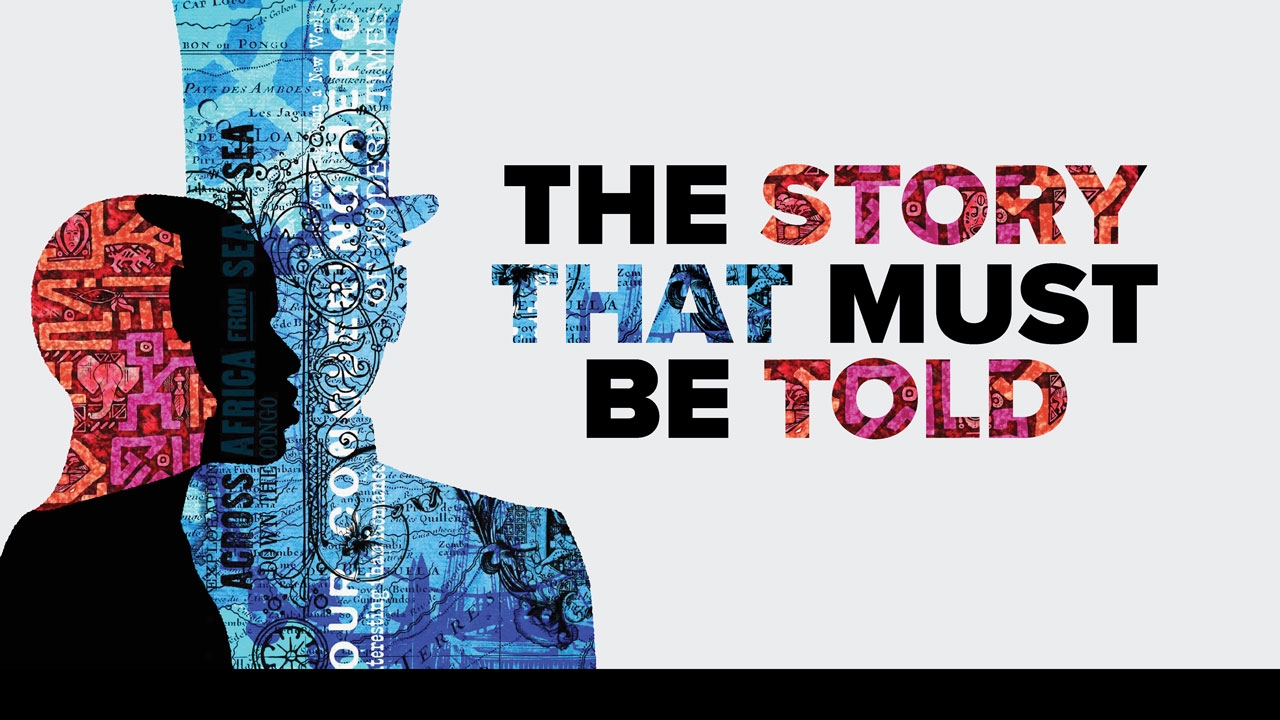This is the story of Ota Benga:
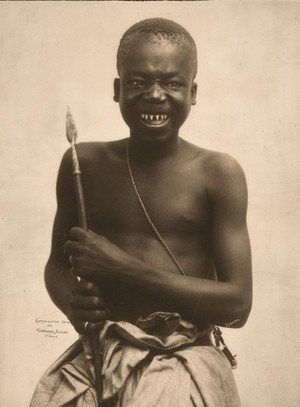 Ota Benga in 1904, photographed by Gerhard Sisters. Photo courtesy of the Missouri Historical Society, St. Louis.
Ota Benga in 1904, photographed by Gerhard Sisters. Photo courtesy of the Missouri Historical Society, St. Louis.In the early 1900s, the young Mbuti tribesman is taken from his home in the Congo to be a curiosity, a sideshow—a “pygmy” on display at the St. Louis World’s Fair. There, he and other native Congo men are part of a human exhibition featuring indigenous people from different continents. Later, Benga is housed at New York’s Museum of Natural History and then the Bronx Zoo, where he is displayed with an orangutan inside a cage in the monkey house.
African-American religious leaders eventually secure Benga’s release, and he is taken to a church orphanage and then to Virginia. In 1916, he commits suicide.
It’s a heartbreaking story—and a true one. And soon, Benga’s tragedy will be told in a rather unlikely art form—an ambitious original stage musical presented by the UAB College of Arts and Sciences Department of Theatre. Produced by faculty and students, Savage has its world premiere this month at UAB’s Alys Stephens Performing Arts Center.
A two-hour epic
When Karla Koskinen first heard about Benga, she wondered why his startling story had been lost to history. The UAB theatre professor, a professional director for more than 25 years, became fascinated with sharing it with a wider audience. “This story has to be told,” she says. “It has to be told in as many ways as it can because there are so many contemporary parallels.”
Koskinen has spent more than three years conceiving the show, conducting research, and crafting a storyline. Along the way, she has assembled a multifaceted creative team. Valerie Accetta, M.F.A., UAB assistant professor and head of musical theatre, joined as co-director. Koskinen worked with acclaimed lyricist Tommy Newman on the book and lyrics, and with both Newman and New York composer Jaime Lonzo on the music. Kazadi Wa Mukuna, Ph.D., an ethnomusicology professor in Ohio, provided language translations. Musical direction is by Carolyn Violi, with choreography by Roy Lightner, both of the Department of Theatre.
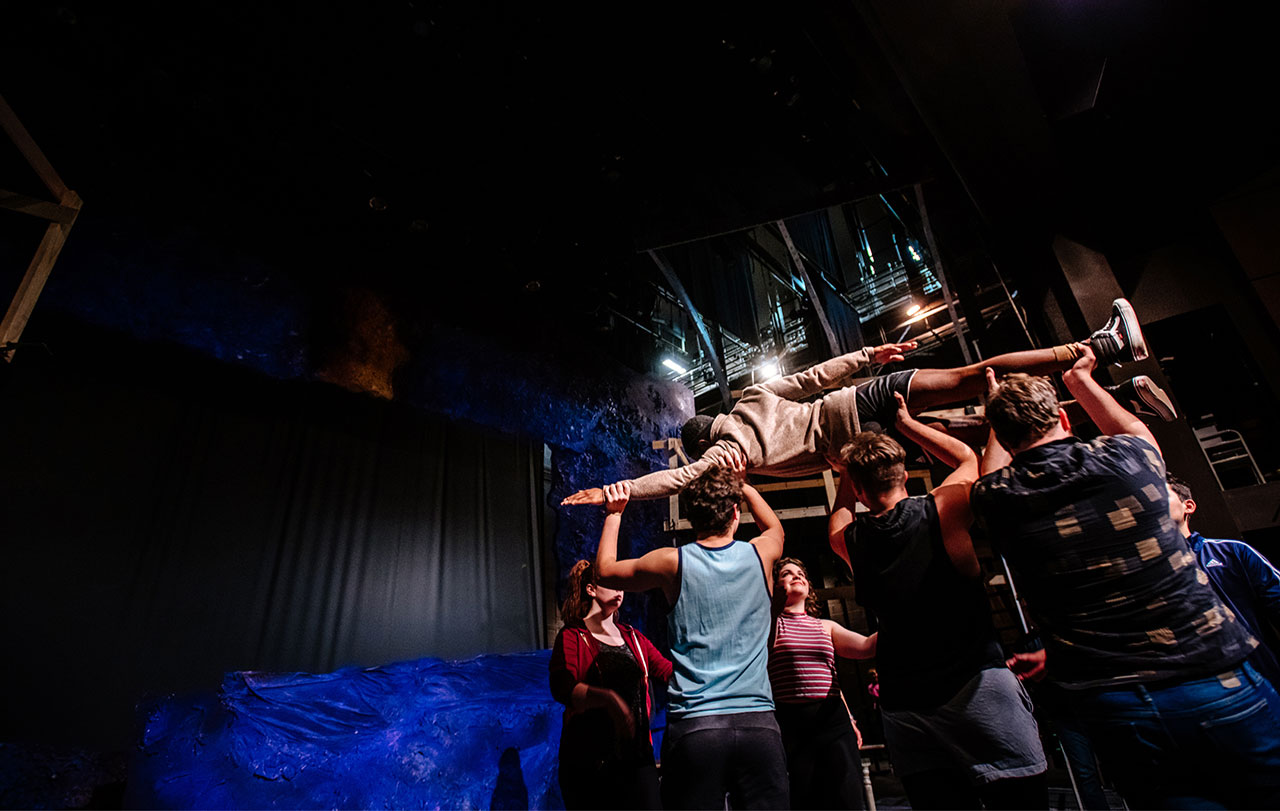 Members of the 20-person cast rehearse a scene from the musical under the guidance of faculty co-directors Valerie Accetta and Karla Koskinen.
Members of the 20-person cast rehearse a scene from the musical under the guidance of faculty co-directors Valerie Accetta and Karla Koskinen.
The script has evolved through several workshops, rewrites, and creative changes—including some suggested by UAB students. The key challenge all along, Koskinen says, has been finding the right way to distill Benga’s journey across continents, decades, and cultures into a two-hour onstage production.
Music helps tie everything together. Savage features African chanting and rhythms, American ragtime and minstrelsy, and dance and spoken word. The different genres identify shifts in setting and tone but also connect the audience with the emotions felt by Benga and other characters. “Music has a way of touching us,” Koskinen says. The 20-person cast—with most actors playing double and triple roles—has learned to master the diverse musical styles and intricate African dances, rehearsing 20 hours a week over nearly three months. Some student actors have even learned phrases in Tshiluba, Benga’s native language.
Koskinen suggested the creation of the Storyteller—a contemporary narrator—to engage the audience directly, providing essential background information while bringing cohesion to the plot. Meanwhile, an elaborately crafted elephant puppet and sophisticated digital projections immerse the audience in Benga’s world, from African forests to American cities.
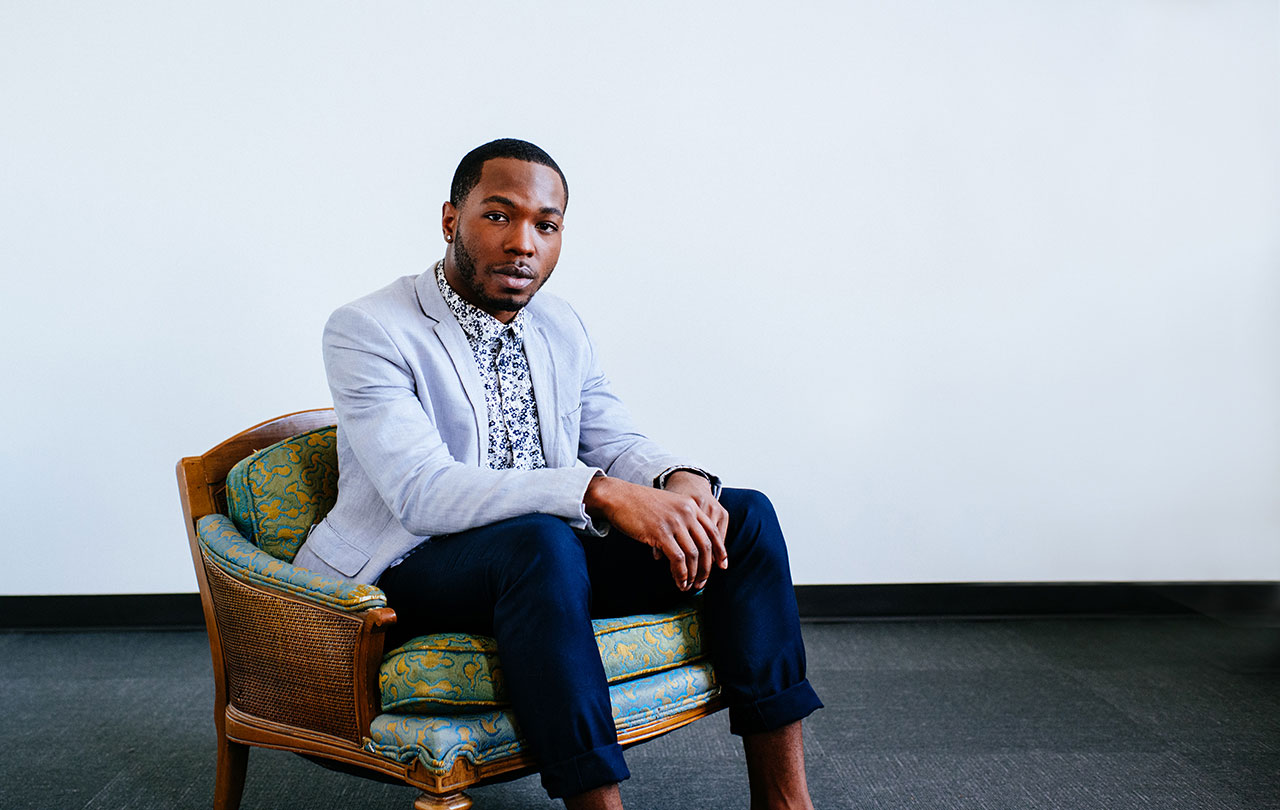 "Ota Benga has such a beautiful heart and soul," says UAB theatre student Royzell D. Walker. Read the full conversation with Walker, who reveals the challenges of originating the role of Benga.
"Ota Benga has such a beautiful heart and soul," says UAB theatre student Royzell D. Walker. Read the full conversation with Walker, who reveals the challenges of originating the role of Benga.
Becoming Benga
Musical theatre major Royzell D. Walker says playing the role of Benga presents unique and exciting opportunities. The Cincinnati native, who graduates just weeks after Savage’s run, is an actor, singer, and dancer who has performed in marquee local productions including Beauty and the Beast, The Wiz, and Theatre UAB’s Hairspray, but this time he is creating a leading character from scratch. There is no play, book, or soundtrack to familiarize Walker or the rest of the cast with the show, Koskinen notes. “It’s all starting from square one,” she says.
That’s tougher than it seems, Walker says. With a musical like Hairspray, for example, the characters are well developed because they have been depicted hundreds of times. But “I am originating the role of Benga, so I have to make choices [about how he should be portrayed], which is a lot of pressure because I want to remain authentic and do him justice,” he explains. “This story is a lot bigger than me.”
Historical research has been key to preparing for the role, Walker says. “I wanted to gather as much information as I could to inform me about who Ota was as a human, instead of what others thought that he was,” he explains. “Becoming Ota Benga is all about being connected with the earth.”
 Prop master J. Marc Quattlebaum tries out a showstopping elephant puppet during its construction. Quattlebaum visited Atlanta's Center for Puppetry Arts before designing and building the two-person pachyderm that helps bring Benga's African home to life.
Prop master J. Marc Quattlebaum tries out a showstopping elephant puppet during its construction. Quattlebaum visited Atlanta's Center for Puppetry Arts before designing and building the two-person pachyderm that helps bring Benga's African home to life.
Facing the truth
During Savage’s opening scene, the Storyteller tells the audience that she has come to breathe life into a name nearly erased from history. She tells us it is time to face a truth we haven’t yet faced.
It’s a big hint that this beautiful, colorful, moving, creative musical will illuminate some harsh, uncomfortable realities, both past and present. The directors agreed that the production, down to its title, should illustrate the insanity of a civilized world capturing and imprisoning a human being for entertainment, Koskinen says. “What defines ‘savage’?” she asks.
That’s the question Walker wants the audience to answer. He believes understanding the past is key to moving forward and creating a better future. And he hopes Savage inspires reflection and awareness among the people who see it. “I want them to examine themselves and the world we live in,” he says. “What happened to Ota Benga from 1904 to 1916 is still happening in 2019.”
Koskinen agrees. Savage will spark dialogue about an America where marginalized people often are locked in cages, both physically and emotionally, she says. “This is going to add one more voice to the conversation, and it’s a conversation that needs to keep happening.”
The UAB creative team intends to keep the discussion going by presenting a reading of Savage for theatre producers in New York following the musical’s Birmingham run. Koskinen is pleased that the show has already sparked some interest. She hopes that America will listen to Ota Benga’s story and—this time—never forget it.
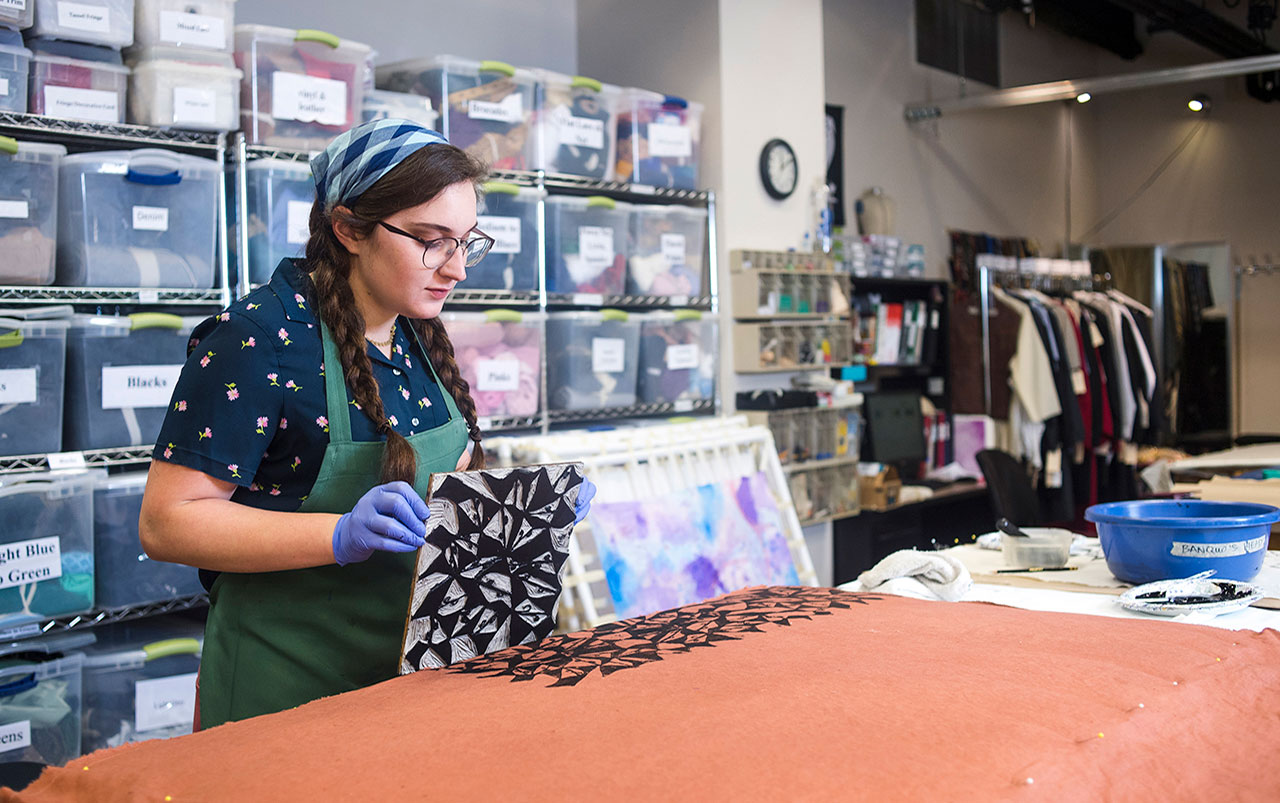 UAB Costume Shop student designer Claire Stewart stamps textiles that will be made into costumes for actors portraying Benga's tribe. The shop created 85 head-to-toe costume looks for the show and built about 50 for the performance.
UAB Costume Shop student designer Claire Stewart stamps textiles that will be made into costumes for actors portraying Benga's tribe. The shop created 85 head-to-toe costume looks for the show and built about 50 for the performance.
Savage has received support from the National Association of Musical Theatre, a UAB Faculty Development Grant, and the Alabama State Council of the Arts.
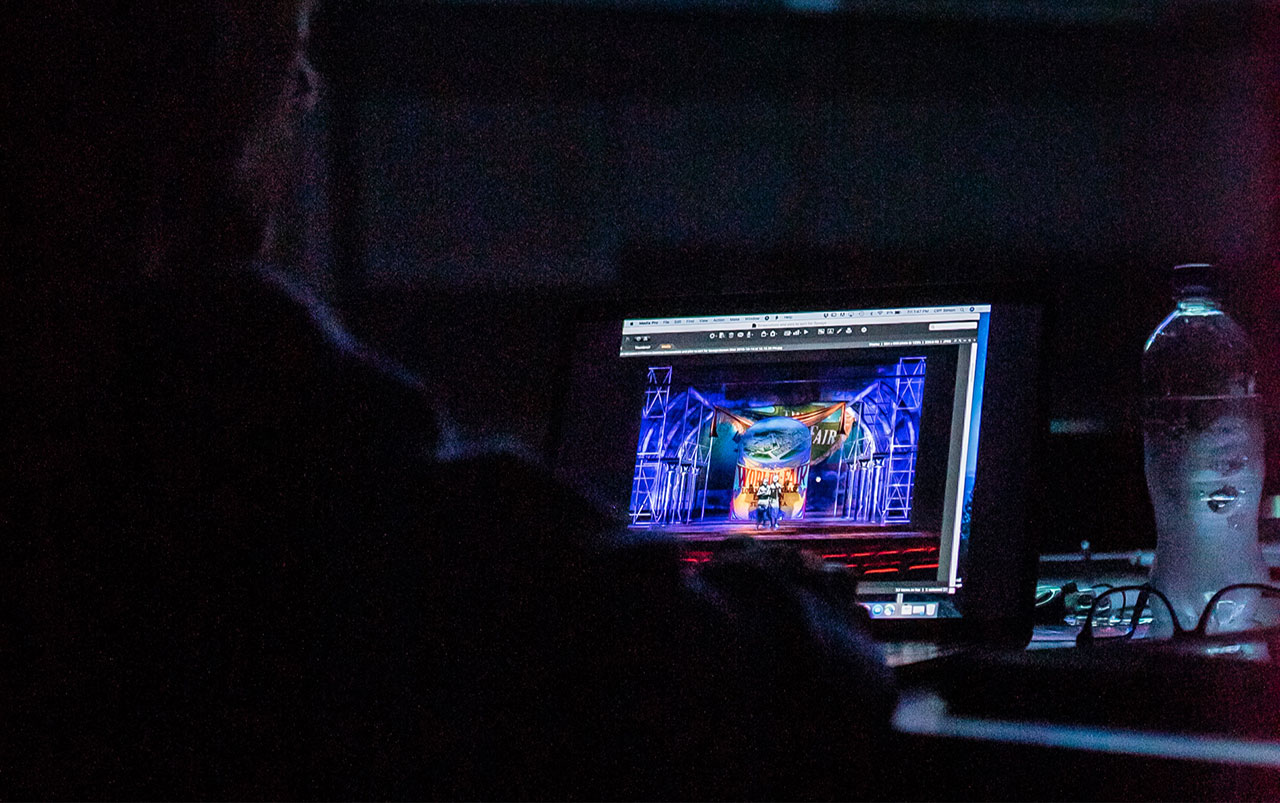 The Savage production team reviews designs for a digital projection that will transform the stage into the 1904 St. Louis World's Fair.
The Savage production team reviews designs for a digital projection that will transform the stage into the 1904 St. Louis World's Fair.
Published April 2019
 Ota Benga in 1904, photographed by Gerhard Sisters. Photo courtesy of the Missouri Historical Society, St. Louis.
Ota Benga in 1904, photographed by Gerhard Sisters. Photo courtesy of the Missouri Historical Society, St. Louis. Members of the 20-person cast rehearse a scene from the musical under the guidance of faculty co-directors Valerie Accetta and Karla Koskinen.
Members of the 20-person cast rehearse a scene from the musical under the guidance of faculty co-directors Valerie Accetta and Karla Koskinen. "Ota Benga has such a beautiful heart and soul," says UAB theatre student Royzell D. Walker. Read the full conversation with Walker, who reveals the challenges of originating the role of Benga.
"Ota Benga has such a beautiful heart and soul," says UAB theatre student Royzell D. Walker. Read the full conversation with Walker, who reveals the challenges of originating the role of Benga. Prop master J. Marc Quattlebaum tries out a showstopping elephant puppet during its construction. Quattlebaum visited Atlanta's Center for Puppetry Arts before designing and building the two-person pachyderm that helps bring Benga's African home to life.
Prop master J. Marc Quattlebaum tries out a showstopping elephant puppet during its construction. Quattlebaum visited Atlanta's Center for Puppetry Arts before designing and building the two-person pachyderm that helps bring Benga's African home to life. UAB Costume Shop student designer Claire Stewart stamps textiles that will be made into costumes for actors portraying Benga's tribe. The shop created 85 head-to-toe costume looks for the show and built about 50 for the performance.
UAB Costume Shop student designer Claire Stewart stamps textiles that will be made into costumes for actors portraying Benga's tribe. The shop created 85 head-to-toe costume looks for the show and built about 50 for the performance. The Savage production team reviews designs for a digital projection that will transform the stage into the 1904 St. Louis World's Fair.
The Savage production team reviews designs for a digital projection that will transform the stage into the 1904 St. Louis World's Fair.